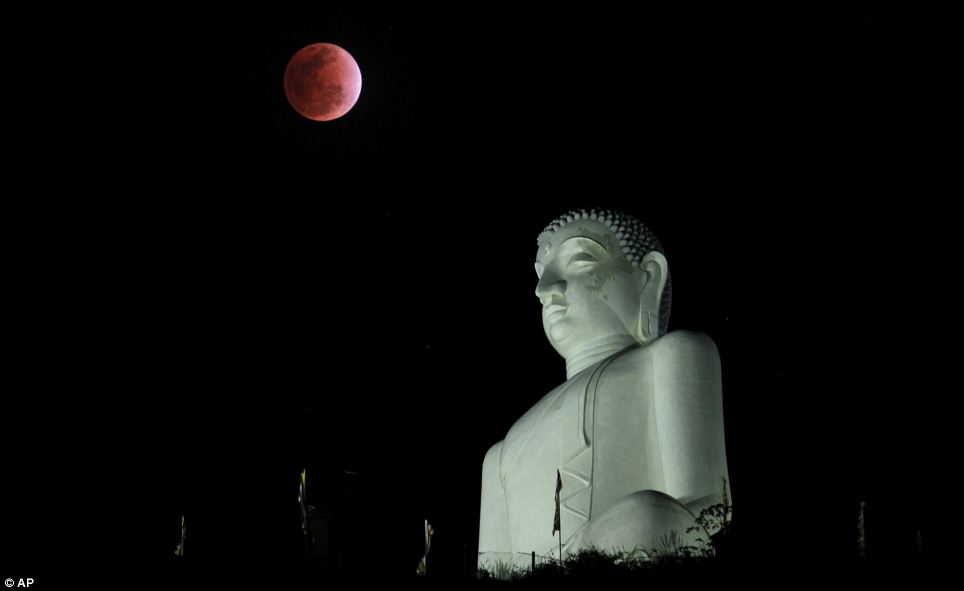
Today is the last chance to see the natural wonder of a total lunar eclipse in 2011.
The Earth passed between the moon and the sun this morning, treating early risers to a cosmic, rusty-red lunar light spectacular.
And additionally it was a rare chance to see an “impossible” eclipse, with the moon red and the rising sun in the sky simultaneously.
Unlike total solar eclipses total lunar eclipses are relatively common and happen on average every two years. This is because the moon is one-third smaller than Earth and so fits more easily into Earth’s umbral shadow.
Today’s total lunar eclipse’s best view is in most parts of western America, Hawaii, northwestern Canada, Australia, New Zealand and central and eastern Asia.
Those in western North America had the best views well before dawn, and viewers could still catch the eclipse until as late as 6:05 a.m. PST.
Unfortunately, sunrise and moonset stopped those in the eastern U.S. from watching the eclipse.
The eclipse began at 4:45 a.m. PST when a red shadow started to cover the moon.
Then as the sun and moon aligned with the Earth slipped in between them, our planet cast a temporary shadow on the moon darkening it and making it appear a deep coppery red, as it blocked the sun’s rays.
The sunlight was still able to pass through Earth’s atmosphere casting a mystical red glow on the moon.
The atmosphere filters out most of the blue light, leaving the red and orange hues that we see during a lunar eclipse.
This light is a projection of all the sunrises and sunsets happening on our planet at this time, combined into a halo around the planet.

The color of the lunar eclipse gives us a report card on the health of the earth’s atmosphere. When it is coppery red it means everything is normal. A black colored eclipse happens when there is a lot of volcanic dust in the atmosphere.
As opposed to a partial eclipse, total eclipses entail a perfect alignment of the three bodies- moon, earth and sun.
Most places in the United States and Canada were able to observe an unusual effect.
This occurs when both the rising sun and the eclipsed moon can be seen at the same time.
This was the second total lunar eclipse this year, the first was in June. The next total lunar eclipse will not be until 2014.
[youtube SKtNgD45OB4]